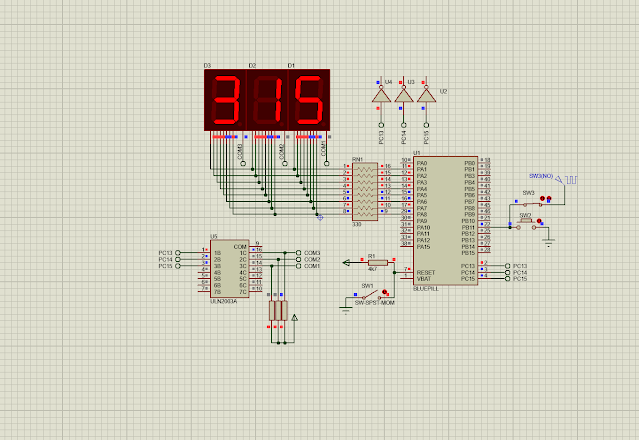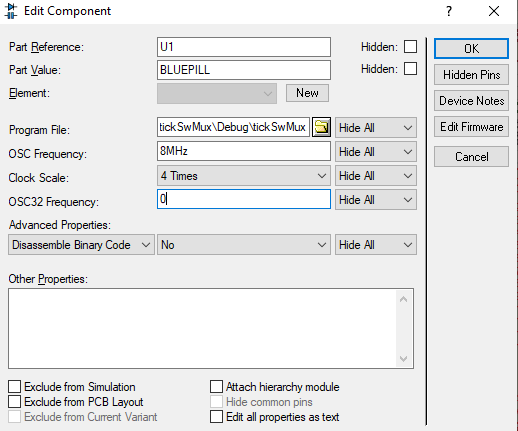In previous post, I have wrote about using STM32 ARM SysTick to drive a multiplexing display. In this post, it's similar to the previous one's. Additionally I will add a push button to count the number of switch pressing. This button also use SysTick too. It's periodically check the switch pressing event.
 |
Running Program On Breadboard |
It will count up to 999 before it rolls down to 0. Input button is active low. It's pulled up by software without external resistor.
 |
Simulating Program In Proteus 8.15 |
I have to to configure the OSC frequency and other settings to make to run properly.
 |
| MCU Properties |
STM32CubeIDE is easy to use because it has code generation wizard.
 |
| MCU software configuration |
Click here to download its source file. For other similar posts please check,
- Getting Started With STM32F103C8T6 Module with STM32CubeIDE
- STM32F103C8T6 Blue Pill SysTick and Multiplexing Display Example
- STM32F103C8T6 Blue Pill Switch And Multiplexing Display Interface Using SysTick
- STM32F103C8T6 Blue Pill SysTick LED Blinking
No comments:
Post a Comment